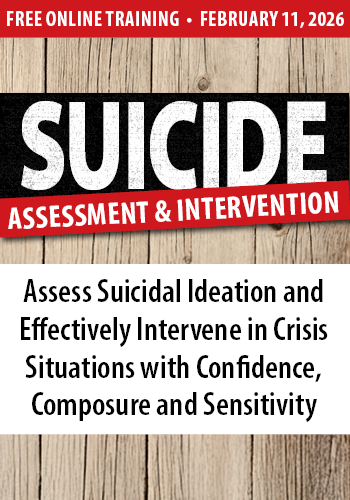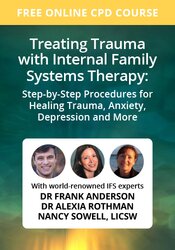Enrol in an online course today for flexible, self-paced learning—no fixed schedule required. Plus, enjoy lifetime access to course materials for convenient revisiting.
Suicidality: An IFS Perspective

Whilst of course assessing the client’s safety and risk around suicidality and taking appropriate action, in IFS we lean into viewing suicidality in terms of internal parts.
This is not to underplay or disregard external circumstances and challenges that clients sometimes face and may need additional support with.
But in the therapists role, in various settings with adults and young people, I have found that understanding and experience in the clear systemic framework that IFS offers has supported me in remaining open, curious and calm when clients present with suicidal ideation and / or a history of suicide attempts.
The Internal System
IFS theory, which was developed by Richard Schwartz, states that the mind is subdivided into different parts that are like subpersonalities. All parts’ intentions are good, but as we encounter difficulties growing up, such as trauma or attachment injuries, some can be wounded, resulting in them carrying negative beliefs or difficult emotions, sensations and memories. These are called ‘exiles’.
Protector parts and exiles
To prevent us ever feeling these bad feelings again, ‘protector parts’ find ways to block out these wounded parts and their feelings. We call the wounded parts ‘exiles’ because they are exiled, locked away, in the internal system. Protectors learn proactive ways to prevent us feeling the exiles’ pain. For instance, a part might learn perfectionist behaviour so we never can be criticised again and therefore never feel that same pain again. Other parts use more reactive strategies. For instance, if we do feel some exiled pain or shame, they may have us drink to numb or distract from the pain.
Different protector parts use different strategies and behaviours to try to help us in some way. Sometimes their efforts to protect us have become extreme and stuck and unfortunately may actually be causing even more problems.
The compassionate ‘Self’
The good news for our clients is that, as well as parts, we also have a calm, compassionate core ‘Self’. This Self cannot be broken, and from this place we have the capacity to heal the exiles, freeing up the protectors from extreme roles and bringing harmony to the system. Just as the sun is always there but can be hidden by clouds, the Self is always there but can be hidden by parts. The role in IFS is to help the client to ‘unblend’ from these parts so that they can feel Self and, from here, help their parts.
Understandably, parts in us, as the therapist, may get triggered when working with suicidality. Our first intention, as therapist, is therefore to unblend from our parts as much as possible and bring Self energy to the situation.
Speaking to suicidal parts
Curiosity is one quality of Self. As the therapist, we can get warmly curious towards parts, including those with thoughts, feelings or behaviours around suicide. In IFS we hold the view that parts have a positive intention for us, however it can be hard to understand initially how this is true of a part connected to suicide. To understand more clearly, we can speak compassionately, safely and directly to suicidal parts. We might ask questions such as: What does this part do or say there? How is it trying to help? When did it take on this role? What is the concern if it didn’t do or say this?
In terms of positive intentions, I have encountered suicidal parts whose intention is to offer the possibility of an end to extreme suffering, which feels endless and hopeless. But each part has its own story. In IFS, from Self, we can negotiate with other parts, helping them feel safe enough to allow space, so that suicidal parts can be communicated with directly. With the understanding gained, we can address what needs to happen so that a suicidal part does not need to take over. We can work in therapy to heal the parts that are in need or have been wounded.
Sharing the model with clients
I have also found that even sharing the concept of IFS with clients can be of service. I have had experiences where the client just knowing that their suicidal feelings are belonging to a part that sometimes blends with them, was enough to give them perspective and clarity – to know these feelings are not the whole of who they are; to know they can find ways to connect with Self; to know there is hope.

















